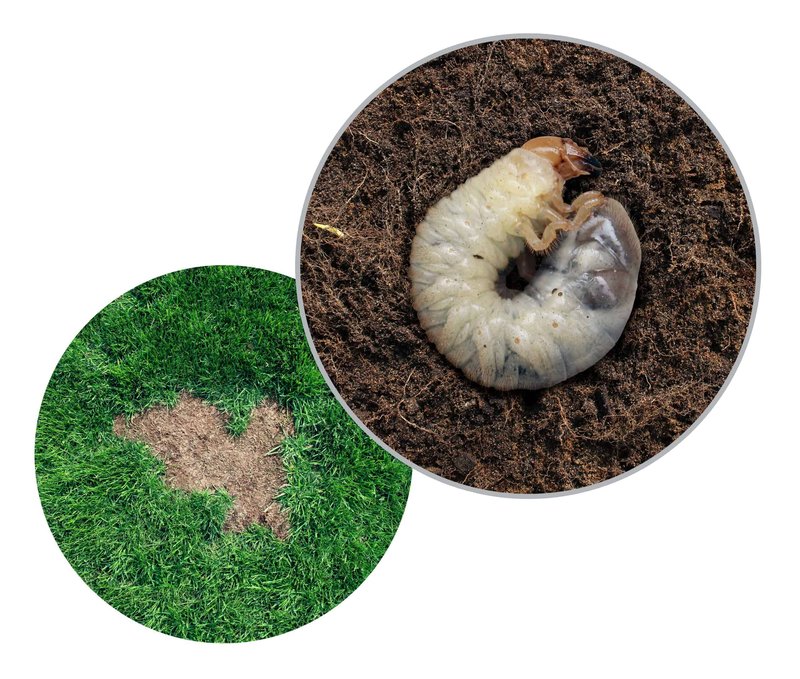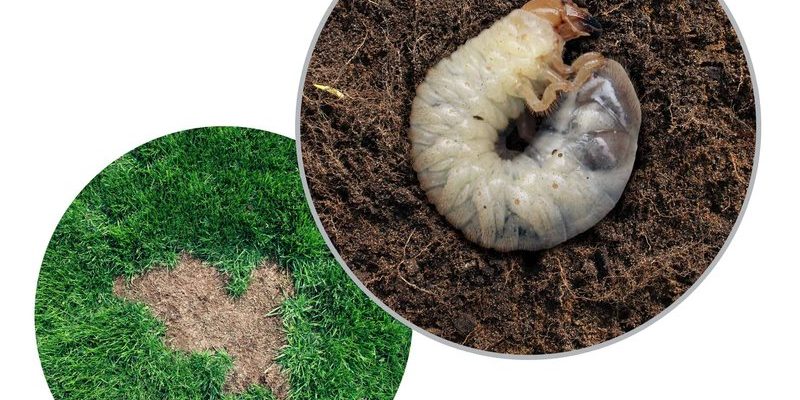
Grub worms are the larvae of various species of beetles, notably the Japanese beetle and the May/June beetle. They thrive in warm, moist soil and can multiply quickly if left unchecked. You might be wondering how these little pests can damage your lawn so much. Well, think about it: when they feast on the roots, they essentially starve your grass, leading to brown patches and a patchy, unhealthy lawn. Let’s dive deeper into the world of grub worms and what they mean for your yard.
What Exactly Are Grub Worms?
Grub worms are the larval stage of certain beetles, typically found beneath the soil in your yard or garden. These little larvae have a C-shaped body and are usually white or cream-colored. They can range in size from about half an inch to one inch long. They mostly feed on the roots of grass, which is why they can cause significant damage to your lawn. Honestly, if you’ve ever noticed brown patches that seem to appear overnight, there’s a good chance grubs are the culprits.
These worms prefer to feast on the roots of grass and other plants, leading to severe stress for your lawn. When the roots get eaten away, the grass can’t absorb nutrients or water properly, which results in those unsightly brown patches. Just picture it: your once lush lawn losing its vibrancy and turning into a patchy mess due to these tiny invaders.
Life Cycle of Grub Worms
Understanding the life cycle of grub worms can help you tackle them effectively. Grubs start as eggs laid by adult beetles in late spring to early summer, typically between May and July. Once the eggs hatch, the larvae begin their destructive feeding spree.
Grub worms usually stay in the soil, munching on the roots until late fall, when they burrow deeper into the ground as temperatures drop. They then enter a dormant stage, hibernating until spring. As temperatures rise, they emerge to become adult beetles, completing the cycle. Here’s the breakdown:
- Egg Stage: Laid by adult beetles in late spring.
- Larval Stage: Feeding on roots through summer and fall.
- Pupal Stage: Dormant in winter, hibernating in the soil.
- Adult Stage: Emerging as beetles in late spring to lay new eggs.
This cycle means that if you don’t manage them, grub populations can explode year after year, leading to more extensive damage and headaches for homeowners.
Signs of Grub Worm Infestation
So, how do you know if you’ve got grub worms in your lawn? There are a few telltale signs to look out for. First of all, if your grass is turning brown and doesn’t spring back when you walk on it, that’s a solid indicator. You might even notice patches of grass that are pulling up easily, as if it’s been rolled up like a carpet.
Another sign is the presence of wildlife, particularly birds, raccoons, or skunks. These critters love to dig for grubs, and their presence could mean your lawn is a buffet! If you notice any of these signs, it’s time to get proactive and check for grubs.
To confirm an infestation, you can do a simple test: dig up a small section of your lawn (about a square foot) and look for grubs. If you find more than a few, you may be dealing with a serious problem.
How to Get Rid of Grub Worms
If you find that grub worms have invaded your lawn, don’t panic! There are several methods you can use to control and eliminate them. Here are some effective ways to tackle these pests:
- Cultural Controls: Keeping your lawn healthy is key. Regular watering, proper mowing, and fertilizing can help your grass outcompete the grubs.
- Natural Predators: Introduce beneficial organisms like nematodes, which are microscopic worms that feed on grubs. Think of them as little soldiers defending your lawn!
- Chemical Treatments: If the infestation is severe, you might consider using pesticides specifically labeled for grubs. Just be sure to follow the instructions carefully to protect beneficial insects.
You might need to combine several approaches for the best results. Even a small reduction in the grub population can help significantly improve your lawn’s health.
Preventing Grub Worms
As the saying goes, an ounce of prevention is worth a pound of cure. To keep grub worms at bay, it’s essential to practice good lawn care habits. Here are some tips to help prevent infestations:
- Maintain a Healthy Lawn: A thick, vigorous lawn can naturally outcompete grubs for resources. Regular watering and appropriate fertilization go a long way.
- Timing is Key: Apply preventive treatments in late spring when adult beetles are laying eggs. This helps stop the problem before it starts.
- Keep Soil Aerated: Compacted soil is an inviting home for grubs. Aerate your lawn periodically to promote healthy root growth and drainage.
By staying vigilant and proactive, you can keep your lawn healthy and minimize the risks of grub worm invasions.
Dealing with grub worms might seem daunting, but with the right knowledge and strategies, you can protect your lawn effectively. By understanding what these little pests are and how they affect your grass, you can take proactive steps to manage and prevent their impact.
Remember, a healthy lawn is your best defense against infestations. So, keep your grass thick and green, and don’t hesitate to take action if you spot any signs of grubs. After all, a lush, vibrant yard is worth the effort! Happy gardening!

